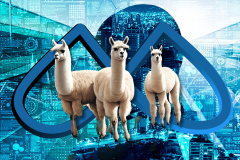Yesterday, the Bureau of Labor Statistics released data indicating that independent contractors make up 6.9 percent of the workforce, down from 7.4 percent in 2005. The media has expended a lot of energy discussing the explosive growth of the gig economy, making this decline seem like a surprise. Is the gig economy tanking, or have we simply exaggerated its impact?
Neither, says Robert D. Biederman, the co-founder and co-CEO of Catalant Technologies, Inc. “It’s understandable as our economy has been in rapid-growth mode, creating more full-time jobs…I think the most important data point is tied to the growth in the number of professional services/knowledge workers going independent,” says Biederman. “According to the data, people working in professional and business services are working independently in far greater numbers than other occupations.”
Catalant itself was built on this surge. Realizing that the gig economy isn’t made up only of people doing ride-sharing, food delivery, and home improvement work, Catalant was founded to help companies and white-collar professionals find each other. Companies are under enormous pressure because of the disruptive forces around them — they must innovate faster and move more quickly in order to maintain a competitive edge. But they often can’t do that with the skills they’ve had on board for years.
Finding Mr. or Ms. Right in the Gig Economy
Biederman’s company aimed to fill that void by using an algorithm to pair professionals — former executives, data scientists, business consultants — with businesses needing their expertise. Using this technology would enable white-collar professionals — a group many freelance platforms overlook — to find work and companies to fill gaps on their current teams.
Catalant’s algorithm is built on a multi-step process. The team consolidates, parses, and compares project descriptions submitted by companies with experts’ profiles. This produces a list of stack-ranked matches between talent and the requested projects. For that to be a useful and effective list, the algorithm needs context. That means the Catalant team builds parameters to help the algorithm understand how language is being used in a specific instance.
Using dimensionality reduction, or the practice of eliminating variables to focus on the core issues, the algorithm goes beyond the descriptions and profiles to take into account historical data. Has this expert tackled a similar project before? Has this company had success with experts of similar backgrounds?
Taking this long view enables the algorithm to adopt the collaborative filtering method used by machine learning systems. This involves analyzing large sets of user behavior, as well as preferences, and pitting those against other users’ tendencies. This data teaches the algorithm to anticipate which pairings will have the most success. It places weight on previous behaviors, such as a high rating of a specific expert or an emphasis on keywords surrounding a particular field of study. In the end, the goal is to establish a relationship between Mr. or Ms. Right and a business in need of help.
Gig Economy Matchmaking for the Long Haul
To date, Catalant hosts more than 50,000 independent workers on its platform. The platform doesn’t simply help them find project-based work; it also improves their work satisfaction and retention for future projects. “Based on what we see every day, we believe deeply that people achieve more when they can seamlessly integrate their personal and professional lives with more choice and control,” Biederman says. “The BLS data clearly supports this notion: 79 percent of independent contractors prefer their alternative work arrangement to traditional employment models.”
Using algorithms to match skills to projects is a sign of how profoundly — and irreversibly — the economy is changing. Biederman says many of the companies Catalant consults with are wary of how this will impact their businesses, but Biederman believes the future of work comes down to two things: people and companies.
While technology is often blamed for displacing or uprooting workers — robots, anyone? — technology has actually enabled people to not worry about how to fit their personal lives into their professional lives. “Technology has been responsible in part for this evolution, but it’s not the only driver,” Biederman explains. “There are others — an aging workforce that wishes to stay connected to work deeper into what used to be ‘retirement,’ a growing percentage of people who are driven by mission (even in for-profit settings) and find that projects with starting and end points feed that sense of mission.”
And Biederman says this can be a boon to the companies ready to embrace contract work. Companies have long been constructed on large buildings and full-time positions for people to fill them. “The BLS data underscores that this just is not how knowledge workers want to work, and innovative companies will turn this into their advantage,” Biederman says. “Forward-thinking companies realize that these vast and deep pools of independent talent offer a tremendous resource to fill skills gaps at their own companies.”
Many of the companies Catalant works with supplement their full-time rosters with independent workers to accelerate their efforts to innovate and remain relevant. Without this blend of employees, they can’t take advantage of opportunities as quickly or keep pace with their peers.
One little algorithm can not only empower employees to design the lives they want, but it can also keep companies competitive. Technology is often treated as a necessary evil in the workplace, but the future of work just may depend on using technology to allow the gig economy to flourish.










